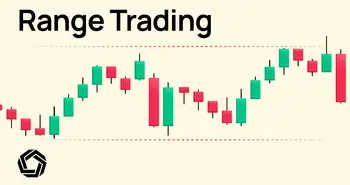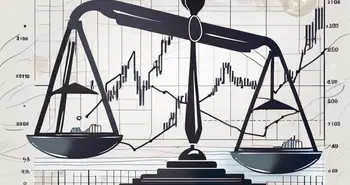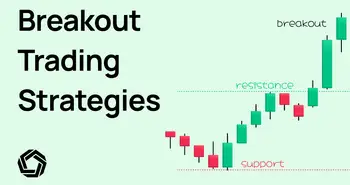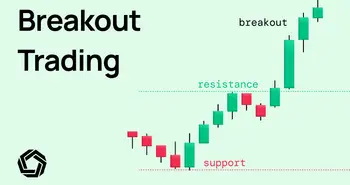How to Identify Range Bound Markets and Trade Successfully

I have been trading in the financial markets for over a decade, and one thing I have learned is that no market condition lasts forever. Prices rise and fall, trends come and go, and sometimes the market gets caught in a range. A range bound market is when prices move within a certain range, with no clear trend in either direction. As a trader, navigating through these sideways markets can be challenging, but with the right strategies, it is possible to find success.
Understanding the Range Bound Market
A range bound market is characterized by the absence of a clear trend. Prices tend to fluctuate between support and resistance levels, creating a trading range. It's important to note that range bound markets can occur in any financial instrument, from stocks and commodities to currencies and indices.
Traders often find range bound markets challenging to navigate, as the lack of a clear trend makes it difficult to predict price movements. However, these market conditions can also present opportunities for range trading strategies, where traders aim to profit from buying at support levels and selling at resistance levels.
Understanding the underlying factors that contribute to a range bound market can help traders make more informed decisions. Economic indicators, market sentiment, and geopolitical events can all influence market behavior and contribute to the formation of a trading range.
Defining Range Bound Market
A range bound market is a period of consolidation in which prices move within a defined range, bouncing between support and resistance levels. This means that the price doesn't make significant higher highs or lower lows, resulting in a sideways market.
During range bound conditions, traders may employ technical analysis tools such as Bollinger Bands, moving averages, and Fibonacci retracement levels to identify potential entry and exit points. These tools can help traders gauge the strength of support and resistance levels and anticipate potential breakouts or breakdowns.
Key Characteristics of a Range Bound Market
There are several key characteristics that define a range bound market:
- Prices remain within a specific range
- No clear trend is evident
- Support and resistance levels become more significant
- Volatility tends to decrease
Traders should exercise caution when trading in range bound markets, as false breakouts and whipsaw movements can lead to unexpected losses. Risk management strategies, such as setting stop-loss orders and managing position sizes, are crucial to protect capital and navigate the uncertainties of a sideways market.
The Importance of Market Analysis in Range Bound Markets
A range bound market may lack a clear trend, but it doesn't mean that there are no opportunities to profit. In fact, market analysis becomes even more crucial in these conditions.
When dealing with a range bound market, traders must pay close attention to various factors that can influence price movements. This includes not only fundamental and technical analysis but also sentiment analysis. Sentiment analysis involves gauging the overall feeling or mood of market participants towards a particular asset or market. Understanding market sentiment can provide valuable insights into potential shifts in supply and demand dynamics, which are essential in range bound markets.
Fundamental Analysis
Fundamental analysis involves examining the underlying factors that may influence the market. This can include economic data, company earnings, and geopolitical events. In a range bound market, understanding these fundamentals can help identify potential catalysts that might trigger a breakout from the trading range.
Traders who incorporate fundamental analysis into their market research process pay close attention to key economic indicators such as GDP growth, inflation rates, and interest rates. By analyzing how these factors impact market sentiment and investor behavior, traders can better anticipate potential price movements in a range bound market.
Technical Analysis
Technical analysis focuses on studying historical price patterns and indicators to predict future price movements. In a range bound market, technical analysis can be particularly useful in identifying support and resistance levels, as well as chart patterns such as triangles, rectangles, and flags.
Experienced traders often use a combination of technical indicators such as moving averages, Relative Strength Index (RSI), and Bollinger Bands to identify potential entry and exit points in a range bound market. By analyzing historical price data and identifying key levels of support and resistance, traders can develop effective trading strategies to capitalize on price fluctuations within the established trading range.
As an expert trader, I always combine both fundamental and technical analysis to get a comprehensive view of the market. This allows me to make informed decisions and increase my chances of success.
Strategies for Trading in a Range Bound Market
When it comes to trading in a range bound market, there are several strategies that traders can employ. These strategies take advantage of the price fluctuations within the range. Here are three effective strategies:
Swing Trading Strategy
Swing trading involves taking advantage of short-term price swings within the trading range. Traders can buy near support levels and sell near resistance levels, aiming to capture profits as prices oscillate within the range.
Channel Trading Strategy
Channel trading involves identifying parallel lines that form the upper and lower boundaries of the trading range. Traders can buy near the lower boundary and sell near the upper boundary, with the expectation that the price will reverse direction when it reaches these levels.
Breakout Trading Strategy
Breakout trading involves taking a position when the price breaks out of the range. Traders can enter a trade when the price surpasses either the support or resistance level, anticipating a continuation of the breakout move.
These strategies require patience and a disciplined approach. It's crucial to set clear entry and exit points, as well as implementing stop losses to manage risk effectively.
Risk Management in Range Bound Markets
Like any investment strategy, trading in a range bound market involves risks. However, with proper risk management, traders can minimize potential losses and protect their capital.
Setting Stop Losses
Setting stop losses is essential in managing risk in range bound markets. By placing a stop loss order below the support level or above the resistance level, traders can limit their losses if the price breaks out of the range.
Diversification as a Risk Management Tool
Diversification is another effective risk management tool. By spreading your investments across different asset classes and markets, you can reduce the impact of any single trade or investment on your overall portfolio.
As an experienced trader, I have faced both winning and losing trades. One piece of advice I can offer is to always focus on risk management. It may not be the most exciting aspect of trading, but it is crucial for long-term success.
The Role of Market Psychology in Range Bound Markets
Market psychology plays a significant role in range bound markets. Traders' emotions and sentiment can influence price movements and contribute to the continuation or break of the range.
Understanding Market Sentiment
Market sentiment refers to the overall attitude and emotions of traders and investors towards the market. In a range bound market, sentiment can sway between optimism and pessimism, impacting the demand and supply of the instrument.
Overcoming Psychological Barriers in Trading
Successful trading requires discipline, patience, and the ability to overcome psychological barriers. In a range bound market, it is easy to get frustrated or impatient with the lack of clear direction. However, it is crucial to stay focused on your strategies and stick to your trading plan.
As an expert trader, I have seen the impact of psychology on trading outcomes. It is essential to maintain a strong mindset and not let emotions dictate your trading decisions.
FAQ
What is a range bound market?
A range bound market is a period of consolidation in which prices move within a defined range, bouncing between support and resistance levels. It is characterized by the absence of a clear trend.
What are the key characteristics of a range bound market?
The key characteristics of a range bound market are:
- Prices remain within a specific range
- No clear trend is evident
- Support and resistance levels become more significant
- Volatility tends to decrease
What strategies can be used in a range bound market?
Some effective strategies for trading in a range bound market are:
- Swing Trading Strategy
- Channel Trading Strategy
- Breakout Trading Strategy
How can risk be managed in range bound markets?
To manage risk in range bound markets, it is important to:
- Set stop losses
- Implement diversification
What is the role of market psychology in range bound markets?
Market psychology influences price movements in range bound markets. Traders' emotions and sentiment impact the demand and supply of the instrument.
How can psychological barriers in trading be overcome?
To overcome psychological barriers in trading, it is important to maintain discipline, patience, and a strong mindset. Stick to your trading plan and avoid letting emotions dictate your decisions.
With these strategies and insights into range bound markets, you can navigate through the ups and downs of sideways price movement and increase your chances of success as a trader.
Ready to put your range bound market strategies into action? Look no further than Morpher, the innovative trading platform that's changing the game with blockchain technology. With Morpher, you can trade across various asset classes with zero fees, infinite liquidity, and the option for fractional investing. Whether you're looking to swing trade, channel trade, or capitalize on breakouts, Morpher's unique trading experience offers up to 10x leverage and the safety of a non-custodial wallet. Embrace the future of investing where you can even short sell without interest fees. Sign Up and Get Your Free Sign Up Bonus today, and elevate your trading to new heights!

Disclaimer: All investments involve risk, and the past performance of a security, industry, sector, market, financial product, trading strategy, or individual’s trading does not guarantee future results or returns. Investors are fully responsible for any investment decisions they make. Such decisions should be based solely on an evaluation of their financial circumstances, investment objectives, risk tolerance, and liquidity needs. This post does not constitute investment advice.

Painless trading for everyone
Hundreds of markets all in one place - Apple, Bitcoin, Gold, Watches, NFTs, Sneakers and so much more.

Painless trading for everyone
Hundreds of markets all in one place - Apple, Bitcoin, Gold, Watches, NFTs, Sneakers and so much more.









